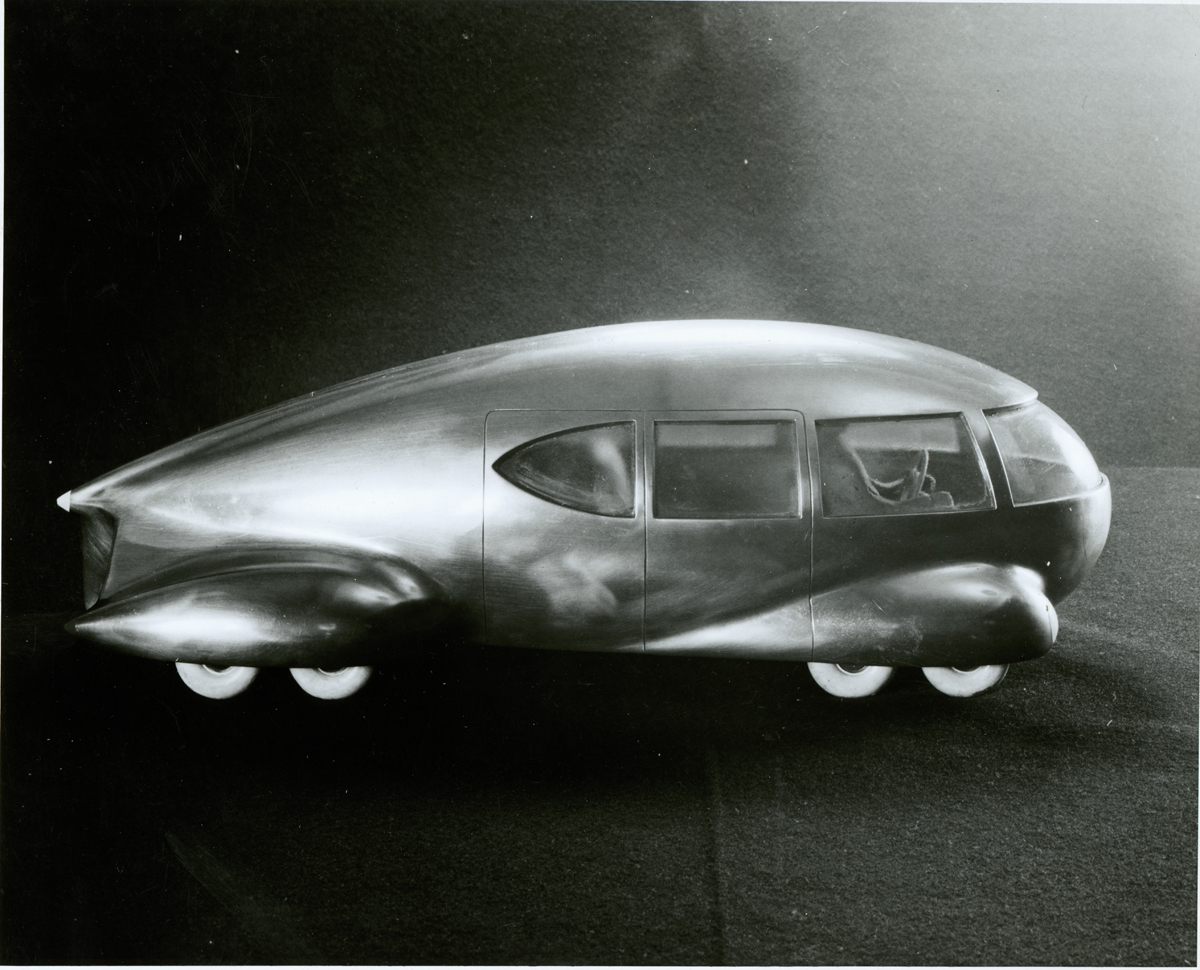
The atria on the first floor of the Ransom Center are surrounded by windows featuring etched reproductions of images from the collections. The windows offer visitors a hint of the cultural treasures to be discovered inside. From the Outside In is a series that highlights some of these images and their creators.
This image of a streamlined car is the product of designer Norman Bel Geddes, who gained fame during the 1920s, ’30s, and ’40s for a broad range of designs. He received his start in New York designing theatrical sets in which he emphasized the use of lighting to set mood as well as provide illumination. He also designed film sets in Hollywood, including some for director Cecil B. DeMille.
Bel Geddes’s design ideas embraced all of modern life. Motorcar Number 9 provides an example of his interest in streamlining. In many ways this car is different from any built at that time or later. It offered excellent visibility through the use of curved glass for the windshield and windows. The steering wheel and single headlight were in the center. The car featured a vertical stabilizer, or rudder, in its tail, like an airplane. The front and rear bumpers were made of chrome, and the rear bumper was attached by three hydraulic shock absorbers. This design offered good use of interior space, providing seating for eight.
This image comes from a time when streamlining was thought to be the wave of the future. In 1931 Bel Geddes described a “House of Tomorrow” that set the stage for architectural streamlining focused on clean and uncluttered lines. He then incorporated the same concept in his design for a “City of Tomorrow,” which became the basis for the hugely popular General Motors “Futurama” exhibit at the 1939 World’s Fair.
Bel Geddes’s ideas have made great contributions to modern design, particularly in the field of transportation. He designed trains, ocean liners, airplanes, cars, and even a flying car. On the exterior, they achieved streamlining by means of a teardrop shape. In the interior, equal attention was given to the use of space, designed to provide large capacities and unique functions. His airliner, for instance, had decks that featured a gymnasium, a solarium, and even areas for deck games. He also designed the interior of the Pan American China Clipper airliner, which featured a central lounge wider than a Pullman club car and was fitted with broad armchairs. These ideas are still visible today—just look at the streamlined vehicles on the animated show Futurama, which borrowed its name from Bel Geddes.
The Ransom Center’s extensive Norman Bel Geddes archive includes a model of Motorcar Number 9, along with other designs, models, and papers that span over 50 years.
Ransom Center volunteer Ray McLeod wrote this post.